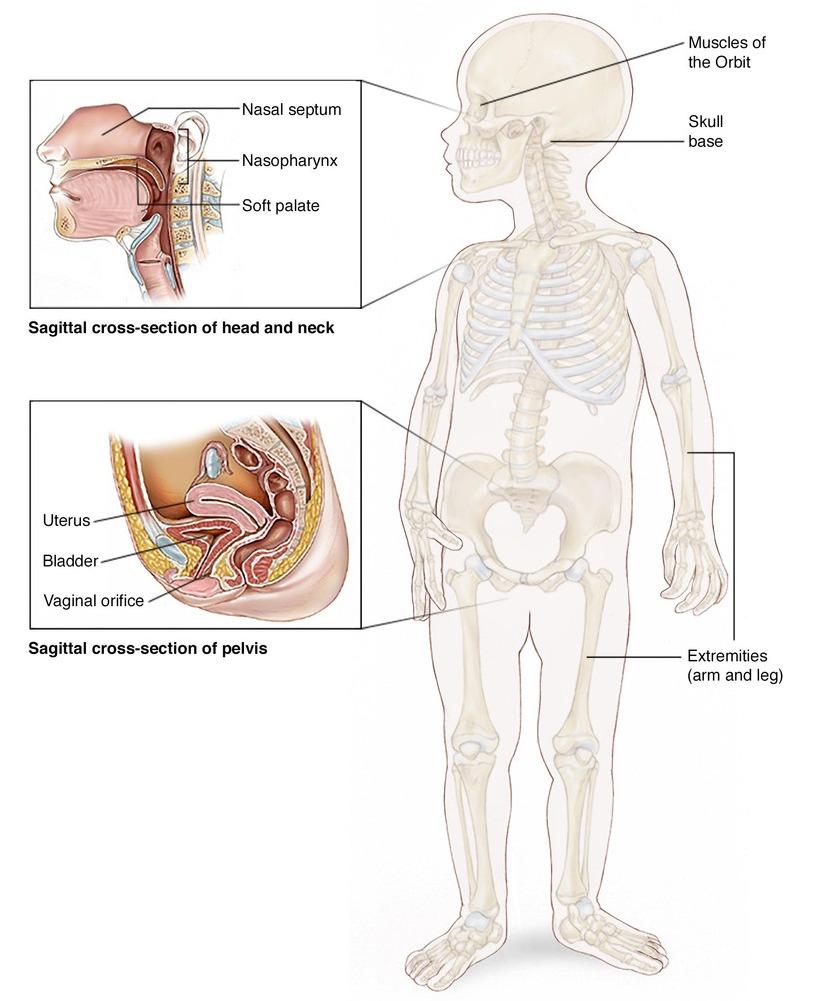The name rhabdomyosarcoma is derived from the word rhabdomyoblasts, which are the cells from which this cancer arises. When the human embryo is only a few weeks old, these cells begin to develop. They eventually turn into the tissues that make up skeletal muscles, which are muscles that facilitate body movement.
Rhabdomyosarcoma is mostly found in children because rhabdoblasts are present in the developing fetus. About half of cases of this disorder occur in children, but rhabdomyosarcoma has also been reported in adults.
Types of Rhabdomyosarcomas
- Embryonic rhabdomyosarcoma is the most common type of such cancer. Children below five years of age are usually affected by this disorder. ERMS occurs in the bladder, vagina, or head and neck area, or in or around the prostate and testicles.
- Alveolar Rhabdomyosarcomas grow rapidly and spread more rapidly. They can occur in older age groups and affect the large muscles of the trunk, arms and legs.
- Anaplastic rhabdomyosarcomas are rare in children.
The actual cause of the disorder is still unknown to scientists. However, it is considered a genetic disorder.
- Children who inherit certain genetic diseases have a higher risk of developing rhabdomyosarcoma. Neurofibromatosis type 1 (NF1), Beckwith-Wiedemann syndrome, and Noonan syndrome, Costello syndrome are among the genetic disorders that can be inherited.
What are the Symptoms of Rhabdomyosarcoma?
If the cancer affects the head and neck area -
- Bleeding in the nose, throat or ears
- Eye bulge or swelling
- Vision problems
- Cross eyes (strabismus)
- Headache
- Ear Ache
- Nasal congestion or nose bleeds

